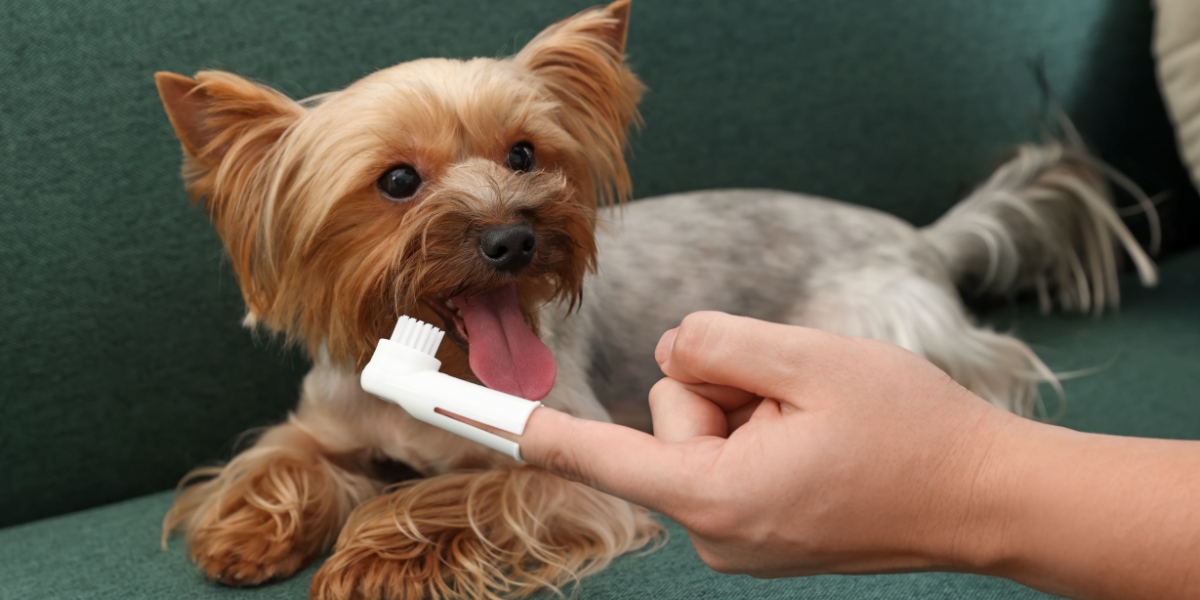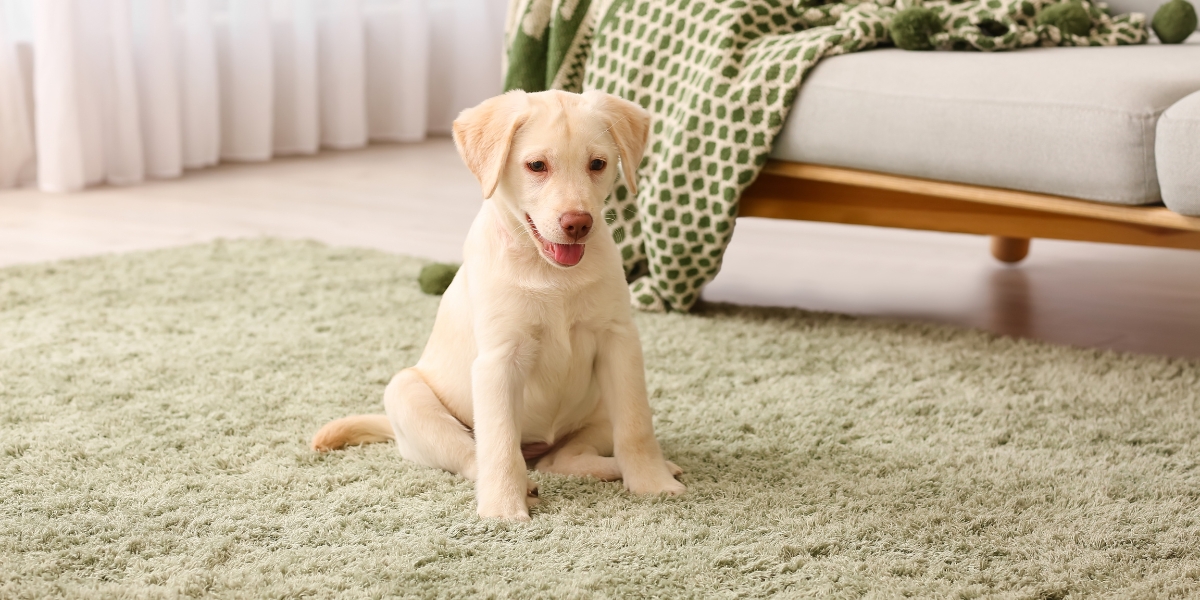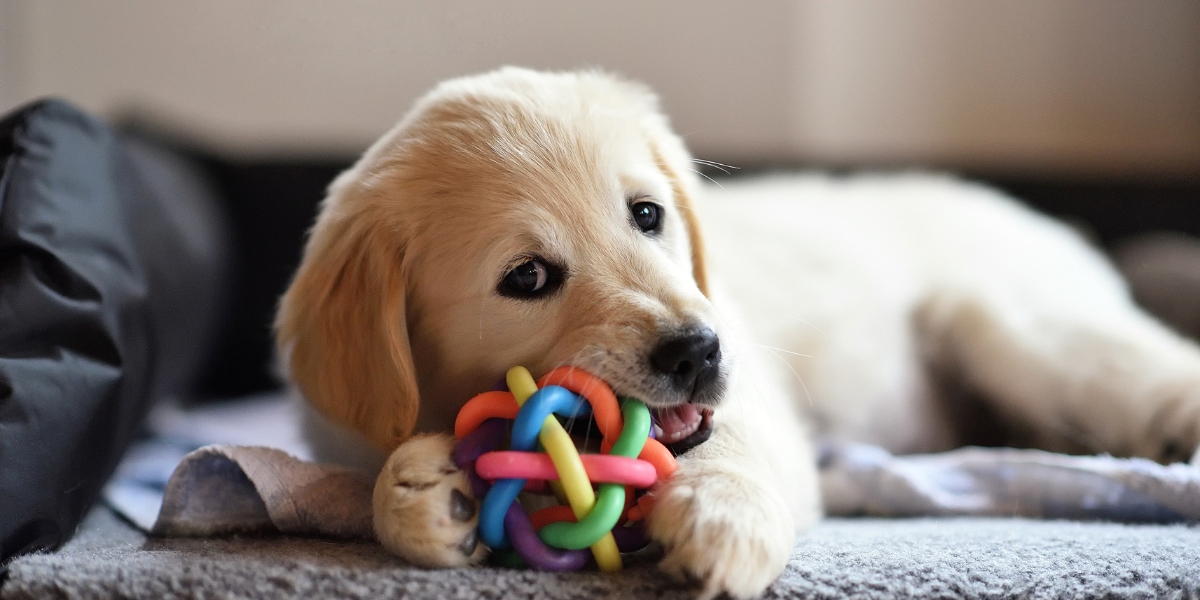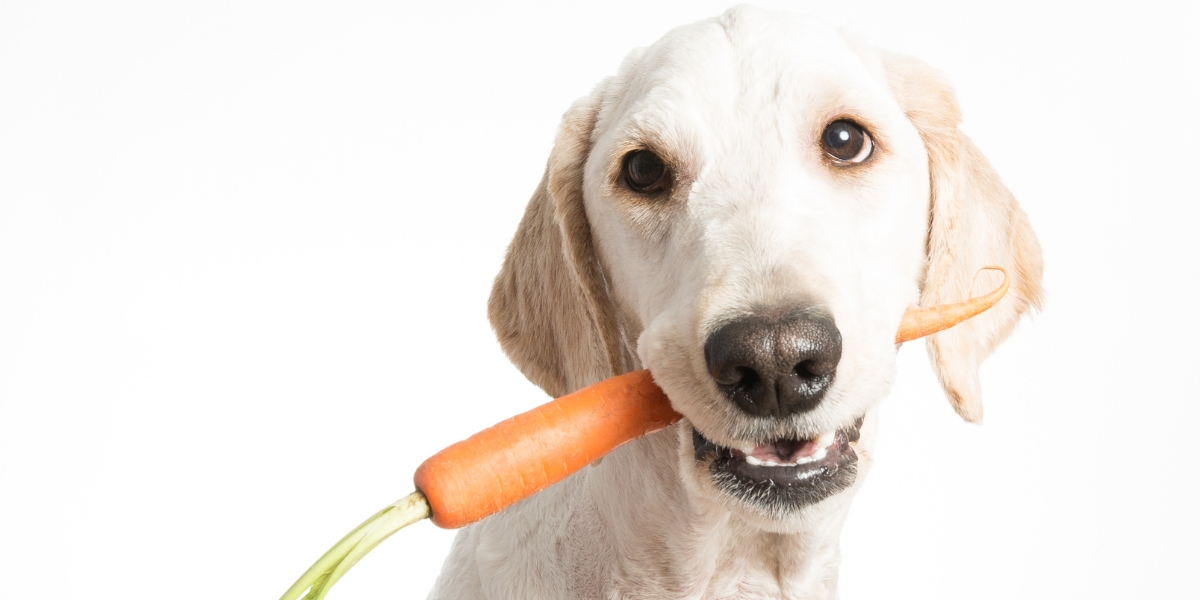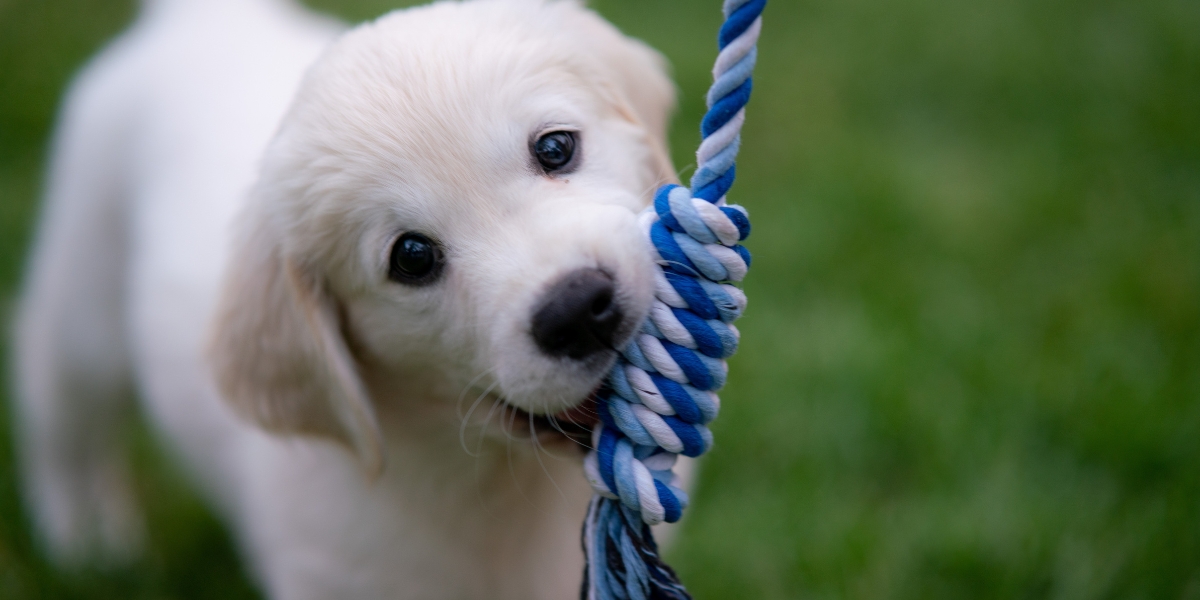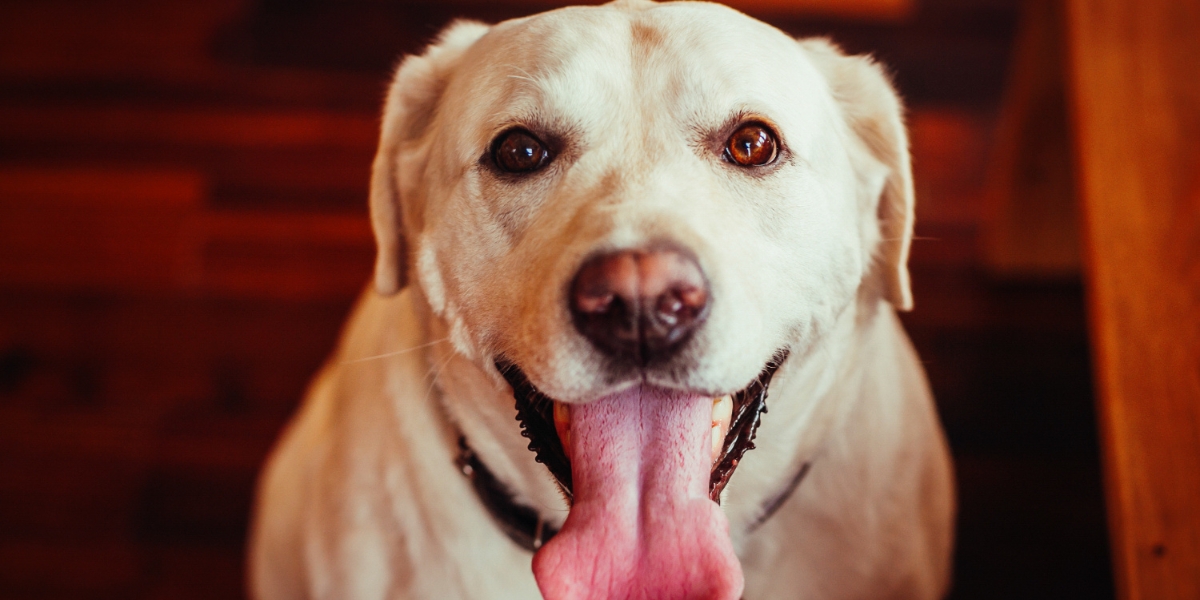Teething is a natural phase that both humans and dogs experience, but it can be particularly challenging for your puppy. Just like a baby whose teeth are starting to erupt and push through their tender gums, puppies go through a similar process, often leading to discomfort. This phase, associated with their permanent teeth growing, can make your fur baby fussy and overly interested in chewing to ease the pain.
As a pet parent, it’s important to help your little one feel comfortable during this painful time by taking special care to support their needs. Whether it’s providing soothing toys or managing their chewing habits, you’ll guide them through this temporary phase with ease, ensuring their teething journey is as smooth as possible.
Your Puppy’s Teething Behaviors
When your puppy starts teething, it’s natural for your fur baby to seek relief by chewing on anything their jaws can wrap around. While it may seem naughty when your pup targets your sofa leg, it’s important to stay calm and remember that they are trying to relieve the pain and discomfort they’re feeling. Providing safe toys can help them find the perfect solution for making their mouth feel better during this challenging process.
If your puppy is also engaging in other behaviors like standing on you or getting overly clingy during teething, it could be an attempt to seek comfort. To understand more about this behavior, check out this guide, which explains why your dog might stand on you.
When Do Puppies Start Teething?
For pet parents, puppies usually begin teething when their first set of baby teeth starts to appear around 5-6 weeks of age. By about 16 weeks, your pup will start to lose those needle-sharp teeth, making way for their adult teeth to appear. The exact timeline can vary based on your dog’s breed, but this phase is a natural part of their growth.
How long does puppy teething last?
Puppies are born toothless, but their baby teeth begin to erupt at around 3 weeks old and by 8 weeks, they have a full set of 28 deciduous teeth. These temporary teeth start to fall out as their adult teeth begin to move into place, creating pressure in the jaw.
This teething phase typically lasts until your four-legged friend reaches about 6-7 months old, when their adult teeth are fully erupted.
The process can vary depending on the breed. Large-breed dogs often have their adult teeth erupt sooner, while small-breed dogs may take longer to complete the eruption. By the end of this phase, your pup will have a big, strong set of 42 adult teeth, marking this teething thing as a past challenge.
4 Tips for Helping a Teething Puppy
Teething puppies can develop problematic teething behaviors, but you can prevent them with these easy tips and tricks. Offer chew toys to soothe teething pain and frozen treats for helping puppies. These simple steps will ease discomfort and keep your pup happy.
1. Puppy-Proof Your Home
When it comes to puppy-proofing your home, start by taking away anything that could get destroyed or harm your pup. Keep dangerous items like medications, batteries, trash, gum, cleaning supplies and even certain indoor and outdoor plants (many are toxic to dogs) out of reach.
Use dog gates to block stairs or areas where your curious puppy might wander. Don’t forget to secure electric cords to prevent chewing accidents!
Offer your pup plenty of appropriate items to chew, like durable toys or teething treats, and create a safe puppy space with a crate. Add a soft bedding, a water bowl, and enough room for your puppy to sit, lie down, stand, and turn around comfortably. This setup keeps your puppy secure while letting them relax in a cozy spot.
2. Buy Puppy Teething Toys
Teething puppies need a safe outlet to soothe their discomfort while keeping them entertained. The best puppy teething toys are made of durable rubber, soft enough to press with a fingernail but firm enough not to damage teeth. Rotate these toys regularly to keep your pup interested and prevent boredom.
Puppy-safe toys that combine textures, like soft fabrics and hard bones, work wonders in helping teething pain. Always offer a mix of teething options, ensuring nothing is too hard or can be broken by sharp teeth. The best choices include.
- Kong Classic toy
- KONG Puppy Binkie
- ChuckIt! Rubber Ball
- PetSafe Busy Buddy Bristle Bone Treat Dispenser
3. Try Frozen Goodies
A frozen snack can work wonders to soothe your puppy’s gums during the teething phase. You can prepare tasty treats like chilled green beans, seedless watermelon, or blueberries, which are dog-friendly options.
For a fun twist, fill a KONG with puppy food mixed with water, then pop it in the freezer—this creates a yummy distraction that also enriches playtime. Even simple ice cubes or frozen carrots are helpful tools for relieving teething pain while keeping your pup entertained.
For teething-specific toys, check pet stores for rubber bones, frozen dog toys, or soft dog-specific items, which are great options to provide relief. These can also double as an excellent aid for crate training by keeping your puppy busy while they learn to stay alone. Always speak to your vet to ensure any snacks or toys are a good option for your little one.
4. Practice Soft-Mouth Training
Mouthy puppies often explore with their mouths, especially during the teething phase. As pet parents, it’s crucial to teach them what’s okay to chew. If your puppy starts mouthing hands or biting while playing, gently pull away and take your attention immediately away from them.
Avoid eye contact and remain calm, as this teaches that mouthing or biting doesn’t earn attention. Once your pup settles, resume playing with a toy or appropriate chew item to redirect their behavior.
Use positive reinforcement to encourage desired behaviors. Offer praise, toys, or even small food rewards when your pup interacts properly. This is the best way to train dogs and builds a strong bond without creating fear or anxiety. If your puppy remains persistently mouthy, consider speaking with a veterinarian for additional tips to help manage behavior.
What should I do about my puppy biting during teething?
Puppies naturally explore the world through nipping and biting, but it’s important to guide this behavior early. If your pup bites too hard, mimic how a young pup reacts by letting out a high-pitched yelp or saying a loud “OW.” This often startles the puppy, causing them to stop and back off. Once they pause, immediately reward good behavior with a calm approach and gentle praise.
If your puppy continues to nip aggressively, quietly stop playing and walk away to show that biting ends fun. You can also gently put your pup in their crate for a short, quiet time. This teaches them to associate nipping with losing attention while reinforcing positive behavior.
Note: The advice provided in this post is intended for informational purposes only and does not constitute medical advice; for an accurate diagnosis of your pet’s condition, always schedule an appointment with a vet.


